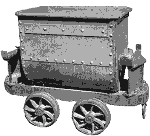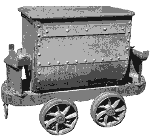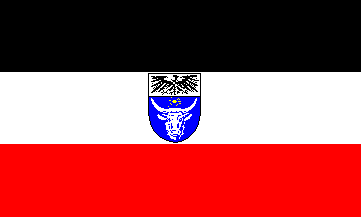|
Date |
Notable
Mining Events |
|
|
| 1685 |
- Simon Van der Stel
sinks exploratory shafts and recovers copper ore from an area close to
O'okiep near Springbok in the Namaqualand district of the North-west Cape.
|
| 1727 |
- "Hottentots"
living on the Cape of Good Hope reported to be working and smelting iron
and possibly copper also by the Dutch.
|
| 1852 |
- Serious
exploitation begins of the copper deposits of North-west Namaqualand commences
with the opening of the Blue mine on the outskirts of Springbok.
- The Cape Colony Government
offer a reward of £100 to anyone discovering coal measures in
the Province.
- The Welch geologist John Henry Davis
finds gold on the farm Paardekraal (Krugersdorp) but the discovery
was kept secret by Transvaal Government and Davis was deported from the
Boer Republic.
|
| 1853 |
- Pieter Marais, a German
born prospector who had gone to California and Australia in search of
gold, discovered alluvial gold in the Jukskei River which runs out of
Johannesburg. He was allowed to continue with his search by the Boer
Government but was threatened with death if he revealed the discovery.
His discoveries soon ran dry.
|
| 1859 |
- First anecdotal reports of
the discovery of a diamond on the Orange River, Griqualand West. This
was made by an American while traveling through the area.
|
| 1860 |
- Discovery of coal deposits
on Cyphergat Farm (Molteno) in the Eastern Cape Province.
|
| 1864 |
- Sinking of Penshaw Colliery
at Molteno in the Eastern Cape Province.
|
| 1866 |
- The discovery of the first
major diamond in South Africa, the "Eureka Diamond" in river
gravels from the Orange River near Hopetown on the Cape Colony border
with Griqualand West.
|
| 1869 |
- The first systematic
diggings for diamonds commences on the Vaal River close to Barkly West
lead by Captain Rolleston of the British Army and a group of
prospectors from Natal.
|
| 1870 |
- The discovery of a further
large diamond on the Jagersfontein Farm in the
Boer republic of the Orange Free State. This started a further
"diamond rush" which lead to the sinking of Jagersfontein
mine, a large open cut mine which worked a diamond bearing
kimberlite pipe.
|
| 1872 |
- Alluvial diamonds discovered
at Christiana in the south-east of the Transvaal Republic.
|
| 1873 |
- Alluvial gold discovered on
the farm Geelhoutboom near Sabie, in the Eastern Transvaal
and later that year more, in greater quantity, at nearby Pilgrims Rest.
The Pilgrim's Rest Goldfield was proclaimed on 22nd
September of the same year. The discovery of this goldfield initiated the country's first
"gold rush".
|
| 1874 |
- The Struben brothers, Fred
and Harry owned parts of the farms Sterkfontein and Wilgespruit in
what is now Roodepoort near Johannesburg. The brothers had long
believed there was gold in the vicinity of the Witwatersrand. During
this year they found what looked to be the first
"payable" gold reef on the Rand. They named their mine the
Confidence Reef, a name that proclaimed that their long search was
over. Alas their mine was to last no more than a year before the gold
ran dry.
|
| 1878 |
- Coal discovered on the farm
Leeuwkuil close to Vereeninging
on the northern bank of the Vaal River on the Transvaal's border with
the Orange Free State. The sinking of several collieries soon
followed.
|
| 1882 |
- Siegmund Hammerschlag erected the first gold
ore-crusher, a two-stamp battery, on the Witwatersrand on his farm Tweefontein (Krugersdorp, Transvaal)
to process the gold bearing rocks found on his land.
However, the surface gold ore on this part of the Rand proved not to
be payable.
|
| 1885 |
- Alluvial gold discovered in
Jubilee Creek at Millwood in the Eastern Cape sparking a "gold
rush" into the area.
|
| 1886 |
- Discovery of the
Witwatersrand main gold reef by Australian prospector, George Harrison
on the farm, "Langlaagte", on what was later to become the
western outskirts of Johannesburg. The immediate area was proclaimed a
public digging by President Kruger later that year sparking South
Africa's most important gold rush.
- Reef gold discovered in the
Millwood area of the Eastern Cape.
|
| 1887 |
- Millwood diggings (Eastern
Cape) proclaimed as an official Goldfield by the Cape
Government.
- Coal discovered in the area
of "The Springs" on the eastern fringes of the Witwatersrand
in the Transvaal.
|
| 1891 |
- Alluvial diamonds discovered
at Bloemhof in the South-eastern Transvaal Republic.
|
| 1893 |
- Sinking of the first
colliery in the Springs district on the eastern fringes of the
Witwatersrand, Transvaal.
|
| 1896 |
- Systematic mining at
Witbank commenced in 1896 when Samuel Stanford, together with the
Neumann Group, established "Witbank Colliery Limited", and sink
the first shaft on the farm Witbank, Eastern Transvaal.
|
| 1898 |
- Thomas Major Cullinan, an
influential building contractor, starts prospecting for diamonds on
the Prinsloo farm (later part of Cullinan Township), near Pretoria in
the Transvaal.
|
| 1902 |
- The Premier (Transvaal)
Diamond Mining Company Ltd. formed by Thomas Cullinan to prospect and
mine for diamonds on Prinsloo farm. Production at the company's
Premier Mine commenced the following year.
|
| 1904 |
- In May of this year the
first 10,000 imported Chinese labourers arrived to work on-the
Witwatersrand gold mines.
|
| 1906 |
- Coal discovered on
Brakfontein farm (later to be part of the township of Delmas,
Transvaal) during the construction of a railway link between Apex and
Witbank.
|
| 1907 |
- White miners on parts of
the Rand go on strike in protest of the fact that the increased use of
Chinese mine labourers is starting to threaten their jobs and
pay.
|
| 1908 |
- Discovery of a diamond in a
railway siding near Lüderitz in southern South West Africa marks the beginnings
of a "diamond rush" into the immediate area and into a
costal corridor extending as far south as the Orange River and the
border with South Africa.
- The last group of
indentured Chinese mine labourers arrive in South Africa. The total
number of such workers on the Rand by this time had reached almost
80,000.
|
| 1909 |
- The Delmas Estate &
Colliery Company start mining for coal close to Delmas (Transvaal).
|
| 1910 |
- The final group of
contracted Chinese mine workers leave South Africa as part of their
mass repatriation back to China by the Transvaal and British
authorities.
|
| 1913 |
- Penshaw Colliery, the last
operating pit in the Cyphergat/Molteno region of the Eastern Cape
finally closes.
|
| 1914 |
- Operations at the Premier
Diamond mine near Pretoria are suspended with the sudden fall in
diamond prices which occurred on the out break of the Great War.
|
| 1916 |
- Production re-starts at the
Premier Diamond Mine (Transvaal) and the following year De Beers acquire
a controlling interest in the mine.
|
| 1919 |
- The Cape Copper Company
ceases its operations in and around O'okiep in the Namaqualand
district of the Northern Cape due to the economic slump which followed
the end of the Great War.
|
| 1921 |
- The Rand Refinery, the
largest in the world, starts operations to refine all of South
Africa's gold and silver output.
|
| 1926 |
- Diamonds discovered at
Alexander Bay in the furthest north-west area of the Cape Province
just south of the Orange River and the border with South West Africa.
- The first "diamond
rush" starts in the Lichtenburg region (North-east Transvaal)
following the chance discovery of the first diamond in the area two
year previously.
|
| 1932 |
- Operations at the Premier
Diamond Mine are again suspended with the on-set of the Great
Depression.
|
| 1939 |
- Production re-starts at the
Premier Diamond Mine (Transvaal).
|
| 1941 |
- Gold discovered on the Far
West Rand. Deep-level mining begins in the Klerksdorp area.
|
| 1946 |
- An amazing exploration core
- with a grade of more than 800 grams/ton - is extracted from 1.2
kilometres below surface near Odendaalsrus, heralds the birth of the
(Orange) Free State goldfields.
|

 Home
Page Back Ground History
Mining Regions
The Postcards
The Tokens
Links
Bibliography
Acknowledgements
Site
Forum Cards & Tokens Classified Ads.
Guest Book
Updates & News Contact
The Site
Home
Page Back Ground History
Mining Regions
The Postcards
The Tokens
Links
Bibliography
Acknowledgements
Site
Forum Cards & Tokens Classified Ads.
Guest Book
Updates & News Contact
The Site
 Home
Page Back Ground History
Mining Regions
The Postcards
The Tokens
Links
Bibliography
Acknowledgements
Site
Forum Cards & Tokens Classified Ads.
Guest Book
Updates & News Contact
The Site
Home
Page Back Ground History
Mining Regions
The Postcards
The Tokens
Links
Bibliography
Acknowledgements
Site
Forum Cards & Tokens Classified Ads.
Guest Book
Updates & News Contact
The Site
 A
Summary Of Key Events In The Development Of Mining In South Africa
A
Summary Of Key Events In The Development Of Mining In South Africa.png)
